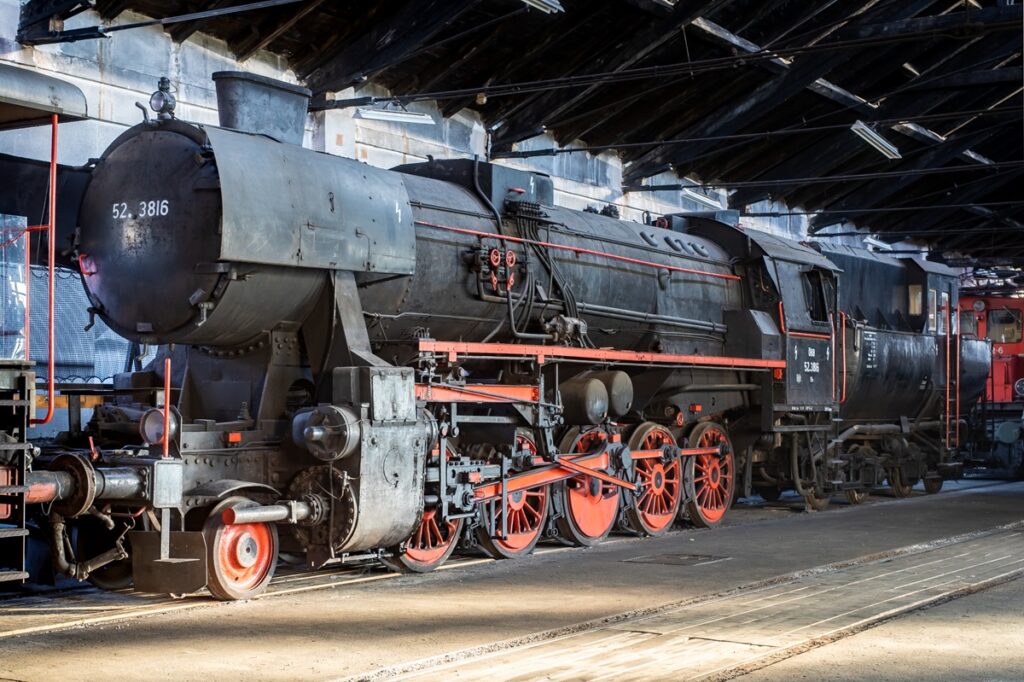Histoy and Vision

The founding of the Lienz Railway Friends’ Association on 29 February 1980 marked a significant moment in the town’s railway history. This association was founded as a direct result of an important decision by the town council in November 1979.
The background
The town council of Lienz, under the leadership of the then mayor Hubert Huber and councillor Egon Gruber, recognised the historical importance of the railway for the town. In recognition of this fact, the council decided in November 1979 to acquire the steam locomotive 52.3816.
The steam locomotive 52.3816
After the purchase, the locomotive was restored to working order. This was an important step in order to preserve the historic vehicle not only as a static exhibit, but also to keep it in working order.
The end of the steam locomotive era in Lienz
In 1993, a technical problem marked the final end of the steam locomotive era in Lienz. The boiling pipes of the historic steam locomotive started leaking again, which was an inevitable turning point.
Technical challenge
The leaking boiling pipes were more than just a minor defect. They represented the advancing age and growing technical complexity of the steam locomotive. After years of faithful service and loving care by railway enthusiasts, the damaged pipes signalled the inevitable end of an era.
Founding meeting 29 February 1980
Railway Villach-Franzensfeste
The imperial-royal Südbahn-Gesellschaft, founded in 1859, had built the 212 kilometre long railway line from Villach through the Drau and Pustertal valleys to Franzensfeste between 1869 and 1871 and put it into operation on 21 November 1871. This railway line, which has its starting point in Marburg an der Drau (sea level 270 m), today’s Maribor, has the character of a valley railway up to Lienz (sea level 676 m) (Marburg – Lienz 270 km * Pustertalbahn Lienz – Franzensfeste 107 km * Marburg – Villach 165 km * Villach – Franzensfeste 212 km * total length Marburg – Franzensfeste 377 km).
In Lienz the train begins to climb and reaches in Toblach (sea level 1211 meters) the highest point of the train. At a length of 46 kilometres (Lienz – Dobbiaco), 535 metres in altitude have to be overcome. Long-lasting ascents of up to 25‰ in connection with the many bends require considerably higher tractive forces than in the plain. Trains travelling uphill therefore often had to be covered with several locomotives at the same time. For these reasons the stationing of a higher number of steam locomotives was planned in Lienz. On September 1, 1915, 63 locomotives were stationed in Lienz.
Südbahn Heizhaus Lienz
This Südbahn Heizhaus (boiler house) system existed to this extent until 1945: Due to bombardments (World War II), the round house was completely destroyed and the long shed badly damaged.

While from the round house only one segment was rebuilt and the turntable was removed, the long shed was completely repaired. Only one extension was built on the ground floor. In the area of the coal depots around 1942 a further turntable was established, which still exists today, as a technical monument protected. With the stationing of the diesel locomotives of the ÖBB series 2045 in Lienz around 1954, the smooth transition from steam to diesel traction began, which was credibly completed in 1965 with the departure of the steam locomotive 92.2271.

The period of the use of diesel traction vehicles ended with the completion of the electrification of the railway line Spittal-Millstättersee – Franzensfeste on 28 May 1989. After 118 years in Lienz, the necessity for the stationing and the associated maintenance of locomotives also came to an end, as the ÖBB electric traction vehicles now used here are stationed and maintained in Villach and Innsbruck.
Today the Südbahn Heizhaus accommodates the Verein der Eisenbahnfreunde Lienz, which receives various vehicles from times long past.